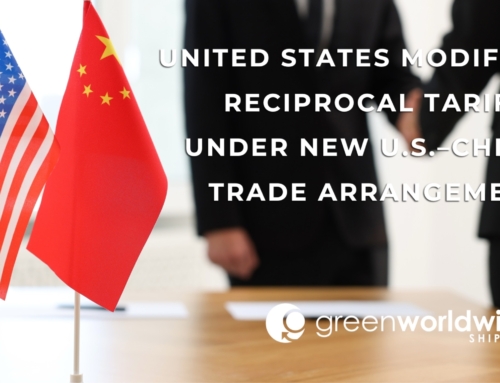WHAT DOES THE NEW U.S.–CHINA TRADE AGREEMENT COVER?
The United States and China have formalized a comprehensive trade and economic agreement following meetings in the Republic of Korea. The accord establishes reciprocal measures on tariffs, export controls, industrial policy, and agricultural trade designed to restore balance and promote transparency. Both governments described the deal as advancing market stability and reinforcing national and economic security interests.
READ THE FULL ANNOUNCEMENT HERE: Fact Sheet: President Donald J. Trump Strikes Deal on Economic and Trade Relations with China
HOW IS CHINA CHANGING ITS EXPORT AND TRADE POLICIES?
China will suspend recently announced export controls on rare earths and related minerals, including gallium, germanium, antimony, and graphite. General licenses will be issued to maintain global supply for U.S. end users and manufacturers. These steps effectively remove the restrictions imposed in April 2025 and October 2022. China will also suspend all retaliatory tariffs and non-tariff measures enacted since March 4, 2025, including those targeting U.S. agricultural and industrial products, and will remove American companies from its unreliable entity and end-user lists.
WHAT AGRICULTURAL COMMITMENTS DID CHINA MAKE?
The agreement specifies that China will purchase 12 million metric tons of U.S. soybeans in the remaining months of 2025 and at least 25 million metric tons annually from 2026 through 2028. China will also resume imports of sorghum and hardwood logs while lifting restrictions on a broad range of U.S. agricultural goods such as chicken, corn, wheat, cotton, pork, beef, fruit, vegetables, and dairy. These commitments formally reverse prior retaliatory measures and restore market access for U.S. producers.
WHAT ACTIONS ARE THE UNITED STATES TAKING UNDER SECTION 301?
The United States will reduce cumulative tariffs on Chinese imports by 10 percentage points of the cumulative rate and maintain the suspension of heightened reciprocal tariffs through 2026. The existing 10 percent reciprocal tariff will continue to apply during this period. Section 301 exclusion expirations will be extended through November 2026, and the interim final rule on end-user controls will be suspended for one year. The United States will also pause responsive actions tied to the Section 301 investigation on China’s maritime, logistics, and shipbuilding sectors while pursuing negotiations with China, the Republic of Korea, and Japan to enhance industrial and shipbuilding cooperation.
HOW DOES THE AGREEMENT ADDRESS FENTANYL ENFORCEMENT AND INDUSTRIAL POLICY?
China will adopt new enforcement measures to curb the export of chemical precursors used in fentanyl production, including prohibitions on shipments to North America and enhanced export controls globally. The agreement also ends Chinese retaliation against U.S. semiconductor manufacturers, authorizes the resumption of production at Nexperia’s facilities in China, and terminates Chinese antitrust and anti-dumping investigations targeting U.S. firms in the semiconductor sector.
WHAT IS THE BROADER REGIONAL CONTEXT OF THIS AGREEMENT?
The White House positioned the agreement as part of a wider regional strategy following the President’s engagements in Malaysia, Cambodia, Thailand, Vietnam, Japan, and the Republic of Korea. Alongside the China accord, these meetings produced new reciprocal trade frameworks and critical-minerals cooperation agreements designed to reinforce U.S. industrial competitiveness and promote coordinated trade enforcement throughout Southeast Asia.
Stay up-to-date on freight news with Green’s Weekly Freight Market Update by following us on LinkedIn. For continuous updates, make sure to check out our website at greenworldwide.com.





